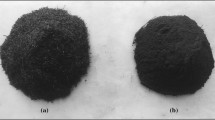Abstract
The rice industry is one of the largest globally and it is one of the most grown crops worldwide, thus producing a significantly large amount of rice waste including straw and husk. The strategy of many countries to get rid of such waste is burning which causes adverse environmental effects as it increases emissions of greenhouse gases and causes severe health issues. This study aims at finding various forms of using rice waste in an adequate way to produce quality concrete without a large carbon footprint. Rice waste has been used in the form of rice husk ash, rice husk and rice straw fibres, both individually and combined. The rice straw fibres was added to mix as a percentage by weight of cement and the both the raw rice husk and rice husk ash were utilized as a cement replacement. Testing involved fresh, hardened, thermal testing as well as EDX analysis. Results revealed a good potential for the use of rice waste into concrete and an ability to minimize cracking. Conclusions and recommendations are provided for safe handling and minimization of negative environmental effects in producing concrete.
Access this chapter
Tax calculation will be finalised at checkout
Purchases are for personal use only
Similar content being viewed by others
References
Abalaka AE (2019) “Strength and some durability properties of concrete containing rice husk ash produced in a charcoal incinerator at low specific surface.” SpringerLink. 26 Nov. 2013. Korea Concrete Institute
Ahmad MM et al (2015) Properties of cement mortar consisting raw rice husk. Appl Mech Mater 802:267–271. https://doi.org/10.4028/www.scientific.net/amm.802.267
Akasaki J, Tashima M, Silva C, Silva E, Barbosa M, Payá J (2005) Comparative studies between the rice husk ash (RHA) amorphous and crystalline
Ataie F (2018) Influence of rice straw fibers on concrete strength and drying shrinkage. Sustainability 10(7):2445. https://doi.org/10.3390/su10072445
Sumit B, Antil Y (2019) “Effect of rice husk on flexural strength of concrete.” Research Trend. 04 Dec. 2014. Research Trend
Coutinho JS, Papadakis VG (2011) Rice husk ash—importance of fineness for its useas pozzolanic and chloride resistant material”. In International conference on durability of building materials and components, Porto Portugal
Habeeb GA, Mahmud HB (2019) “Study on properties of rice husk ash and its use as cement replacement material.” Mater Res
Le Anh-Tuan B, Chun-Tsun C (2019) “Effect of silica forms in rice husk ash on the properties of concrete.” SpringerLink. 01 Mar. 2012. University of Science and Technology Beijing
Pinheiro S, Vasconcelos R, Paiva O, Cordeiro G, Chaves M, Filho TR, Fairbairn E (2011) Production of silica gel from residual rice husk ash. Quim Nova 108:71–75
Soares LWO et al (2015) The effect of rice husk ash as pozzolan in addition to cement Portland class g for oil well cementing. J Petroleum Sci Eng 131:80–850
Yuzer NS, Vasconcelos R, Paiva O, Cordeiro G, Chaves M, Filho TR, Fairbairn E (2011) Production of silica gel from residual rice husk ash. Quim Nova 108:71–75
Yuzer N et al (2013) “Influence of raw rice husk addition on structure and properties of concrete.” Constr Build Mater. Elsevier
Acknowledgements
Dr. Ahmed El-Gendy, Construction Engineering Department, American University in Cairo. Dr. Mohamed Yassine, Construction Engineering Department, American University in Cairo. Dr. Safwan Khedr, Construction Engineering Department, American University in Cairo. Dr. Maram Saudy, Construction Engineering Department, American University in Cairo.
Author information
Authors and Affiliations
Editor information
Editors and Affiliations
Rights and permissions
Copyright information
© 2023 Canadian Society for Civil Engineering
About this paper
Cite this paper
Serageldin, Z. et al. (2023). Incorporation of Combined Rice Husk and Straw Waste in Concrete Production. In: Walbridge, S., et al. Proceedings of the Canadian Society of Civil Engineering Annual Conference 2021 . CSCE 2021. Lecture Notes in Civil Engineering, vol 248. Springer, Singapore. https://doi.org/10.1007/978-981-19-1004-3_48
Download citation
DOI: https://doi.org/10.1007/978-981-19-1004-3_48
Published:
Publisher Name: Springer, Singapore
Print ISBN: 978-981-19-1003-6
Online ISBN: 978-981-19-1004-3
eBook Packages: EngineeringEngineering (R0)




